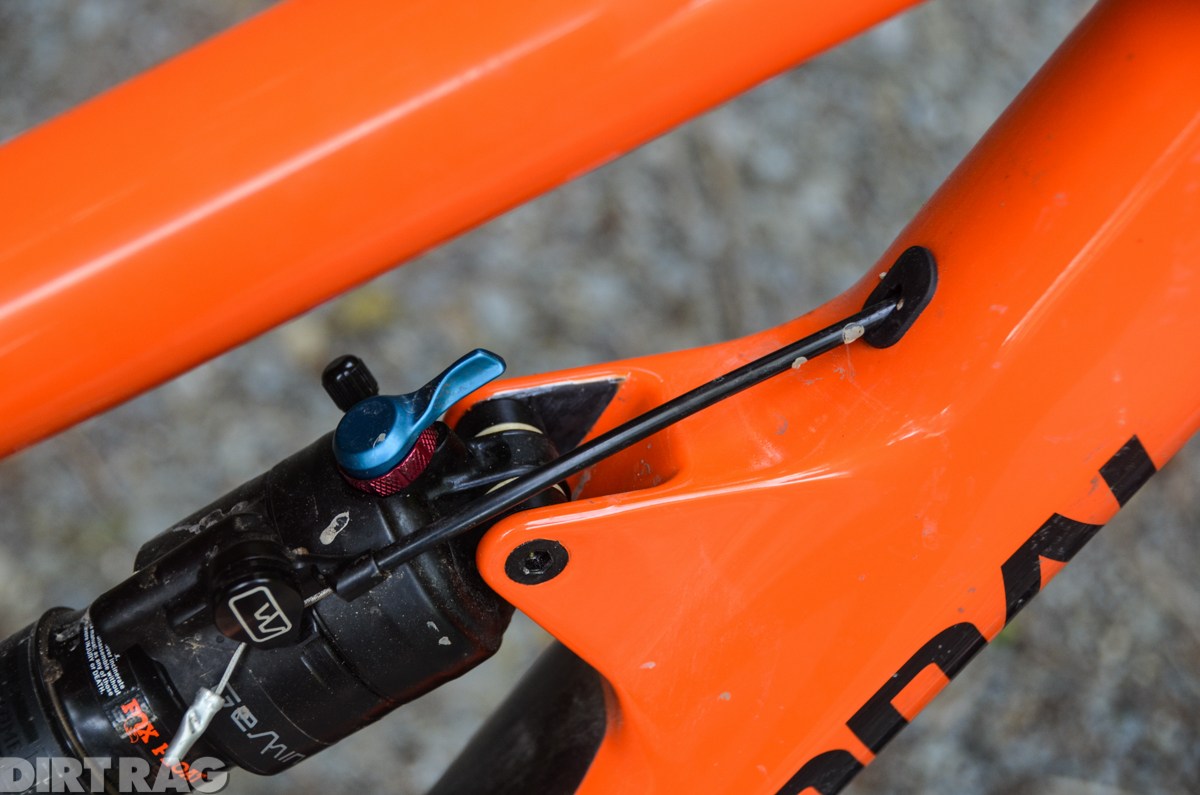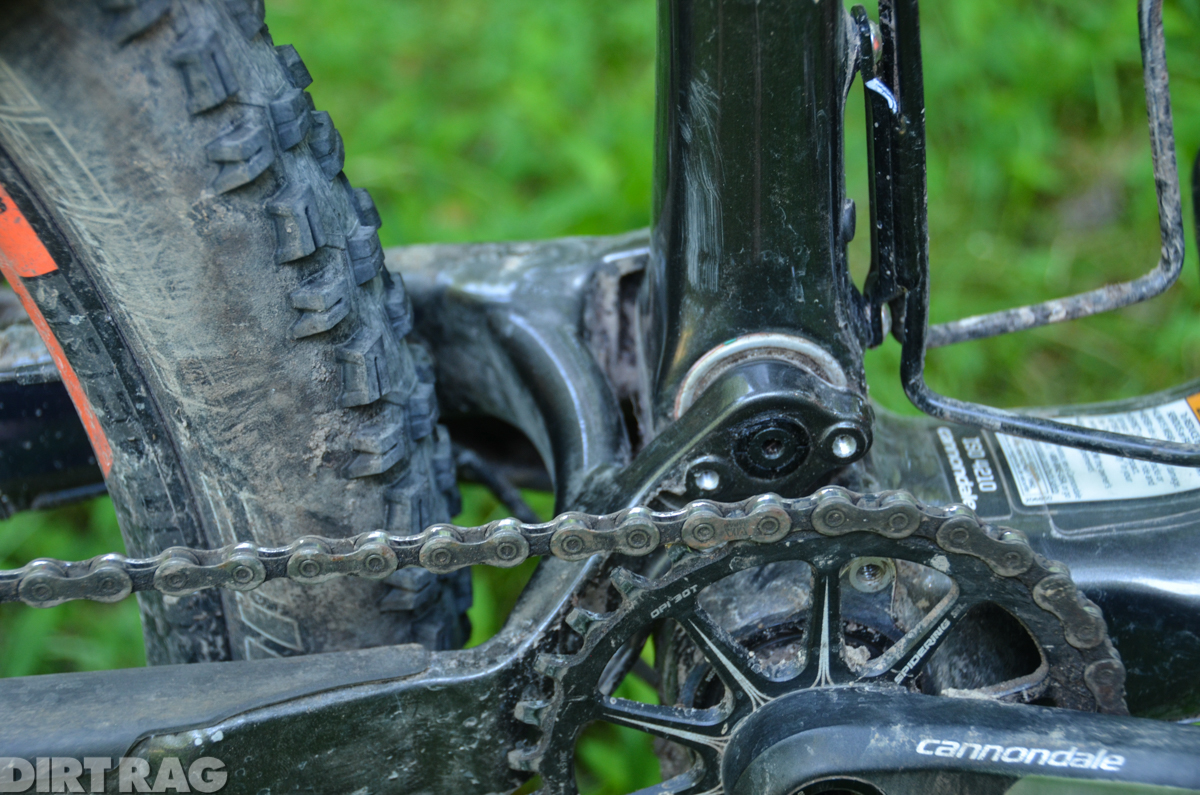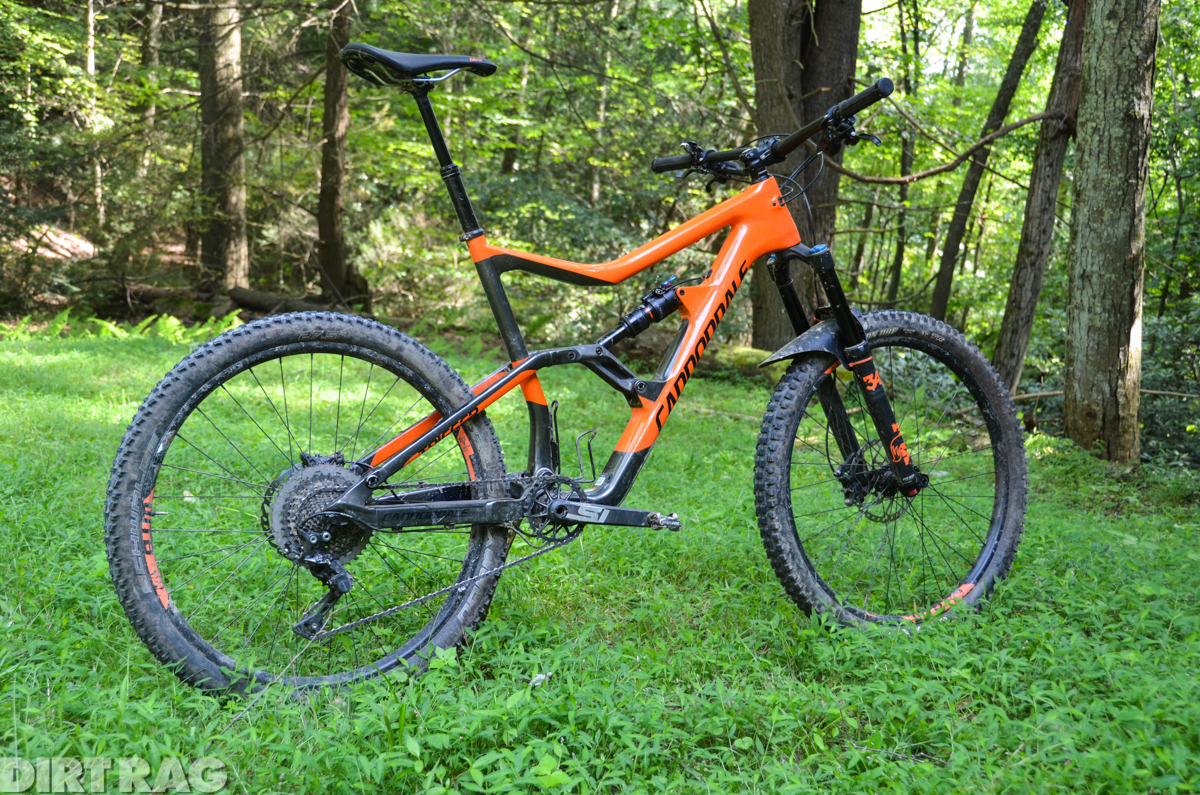Review: 2018 Cannondale Trigger 3
Originally posted on January 8, 2018 at 1:14 amTester: Evan Gross
Age: 30
Weight: 185 lbs.
Height: 6’ 2”
Inseam: 36.5”
A different Trigger by the same name … again. While the last several generations of Trigger have been fussy to set up, largely misunderstood and plagued by swingarm cracks, the 2018 hopes to solve many of these issues by reverting to a more traditional shock and placement in a now-familiar package.
Originally introduced in 2013 as an “over mountain bike,” the Trigger has gone through many changes since its inception as a single pivot linkage-driven 26 or 29 inch bike, equipped with a pull shock and featuring 70-120 mm of adjustable travel/geometry. I think it’s safe to say we are all done with trying to figure out what that means and can call it a mid-travel trail bike. The short-lived 26-inch single pivot Trigger was eliminated after only one year with a 27.5 version getting thrown into the mix in 2015 as a do-it-all trail bike (reviewed in Dirt Rag issue #181.) The 29er was subsequently dropped in 2016 with few changes to the 27.5 design until the recent reboot. Confused yet? Well … get ready.

According to Cannondale, this complete re-draft brings the 2018 Trigger more in line with other mid-travel trail bikes with a renewed focus on simplicity. The Trigger still occupies the middle ground between the slightly shorter, non-adjustable 120 mm travel Habit and the adjustable 160/130 mm travel Jekyll.
The latest iteration gets a push shock, adjustable travel, internal routing and maintains its single pivot lineage. A more modern “trail” geometry has also been adopted to fall in line with current trends of slammed chainstays (16.5 inches), Boost spacing, a slackened headtube (66 degrees) and steeper seat tube (74.5 degrees). Working off the the now-normal 148 mm Boost-spaced rear hub, Cannondale introduces Ai – Artificial Intelligence … er … Asymmetric Integration, as Cannondale wants it to be known. Ai takes the rear hub and offsets it by 6 mm to the drive side in an effort to free up space for tire and chainring clearance, increase wheel stiffness and strength and, though no Trigger is set up stock with one, make room for a front derailleur – all while maintaining shorter stays. Despite the funky Ai rear end, while riding I couldn’t say I noticed any difference between it and a straight Boost setup. This seems a bit overkill on a bike that can only run up to a 2.5 inch tire on a 30 mm rim and generally wouldn’t have a front derailleur; perhaps an offset rim would’ve achieved the same end result of a stiffer wheel without all the compatiblity issues. Since standard wheels can be used after being redished to the Ai offset, this isn’t a deal breaker, but the benefits are pretty hard to spot.
The three Trigger models all feature the Cannondale house blend 145 mm travel BallisTec carbon front triangle with internal cable routing, room for a single bottle, replaceable downtube guard, and Fox Float Performance DPS EVOL w/ Gemini remote rear shock. As on past models, the Float gets two catchy settings, rebranded as Hustle and Flow. The actuation between the two is done via a cumbersome two-button remote, which could easily be refined to make the function a bit more intuitive.
In Flow mode, the rear shock is wide open to 145 mm of travel, riding the same as any regular Float. When the bar-actuated Hustle mode is implemented, the piston is physically moved forward into its stroke, reducing the travel and ramping up the progression – way up, to the point where it actually restricts travel to 115 mm. The result is more resistance to pedal bob, fewer pedal strikes and a more progressive rear end for mashing on the flats or slinking up the climbs.
While the suspension certainly worked as described, the unintended consequence was the still-finicky setup. Finding that goldilocks air pressure to allow the Flow mode to feel plush but not soppy and the Hustle to still take up small input was something that proved more difficult than anticipated. As with anything that promises to solve all the problems, it does both well but not quite perfectly.

The long-travel Lefty has been retired, so the Trigger no longer sports one. For Lefty lovers, this might be a disappointment, but for others, this might be the segue to purchasing an otherwise well-spec’d bike. That said, the 150 mm travel Fox 34 Performance is a fine fork with ample external adjustments sans finicky nubs or knobs, and given the price tag on this base model, it’s perfectly suited to the task at hand. It goes up with gusto and bombs the downs. The fork does not offer a remote nor does it utilize any sync with the Hustle/Flow option of the rear end, which was just fine by me.
The mid-level Shimano SLX/XT drivetrain mashup is reasonable for a relatively affordable full-carbon full-squish trail slayer. Shimano brakes will always get a solid nod from me whether base level Deore or XTR. While they might not have modulation that others offer, they work predictably and pert near all the time. For those who love a SRAM drivetrain and brakes, you’ll be stoked to know that both the Trigger 1 and 2 employ a full Eagle drivetrain and Guide brakes.
The WTB Frequency Race i29 rims laced to Formula hubs performed as to be expected, problem free, but they don’t impress in the weight and engagement departments. That said, the choice to wrap them with Maxxis Minion 27.5 x 2.3 inch DHF front and a DHR II rear was spot on. As with most stock bikes at this price point, the first upgrade would be, without question, new wheels.

After a solid three months of riding the Trigger on everything from the flow trails of Allegrippis, Pennsylvania, to the mossy, fern-laden chunk of Big Bear, West Virginia, and the hardly-a-viable-line ridge top trails of Bald Eagle, Pennylvania, I can say that the Trigger reboot is certainly noteworthy. Remote lockouts on full squish bikes have always irked me – why have suspension if you are going to lock it out? We’ve got these engineer types that are working night and day to eliminate rider induced inputs, so why can’t we all benefit? The Hustle mode is not a lock-out, and riding flow trail with it engaged was truly sweet. There was no mid-stroke wallow to bog you down when rollers pack up and no harsh bottom out if you misread a double.
Back on my home turf in Central Pennsylvania, Bald Eagle has some amazingly raw ridgetop trails that are super chunky with choose-your-own-adventure lines. As some say: “for the aficionado.” The short stays and mid-length wheelbase (48 inches) allowed this bike to handle the slow technical lines with confidence. Though again, I found myself running the Hustle mode across most of the ridge top to avoid bogging, and the super-progressive compression eliminated the bottom out that might’ve otherwise occurred on the abundant square edged rock. The Flow mode was certainly appreciated on the high-speed downs as these tend to be high speed, rutted-out moto trails.
Measuring in at a full 6 feet 2 inches, I still find 29 or 27plus about the smallest I’m willing to ride anymore. It would be great to see the same platform available in 29-inch as well as 27.5, very similar to what other players have done with their mid-travel trail bikes and Cannondale used to offer. The short chainstays paired with the longer top tube of the XL made for some front wheel wander when climbing the steeps; however, bumping the stay length back up to fit a 29er wheel could really make this bike shine for those other nimble giants.
As Jon Pratt said in his 2015 27.5 Trigger review, and is still very much the case nearly three years later, “The Trigger could be the quintessential quiver killer.” Bring out a 27plus or 29-inch version and I might very well be able to get behind that statement. Despite my hesitations and love of big wheels, Cannondale successfully rebooted the Trigger into a relevant package for modern trails and modern riders.

Specs:
Reach: 19.1”
Stack: 24”
Top Tube: 25.8”
Head Tube: 66°
Seat Tube: 74.5°
BB height: 13.6”
Chainstays: 16.5”
Weight: 30.1 lbs.
Price: $3,999
Sizes: S, M, L, XL (tested)
